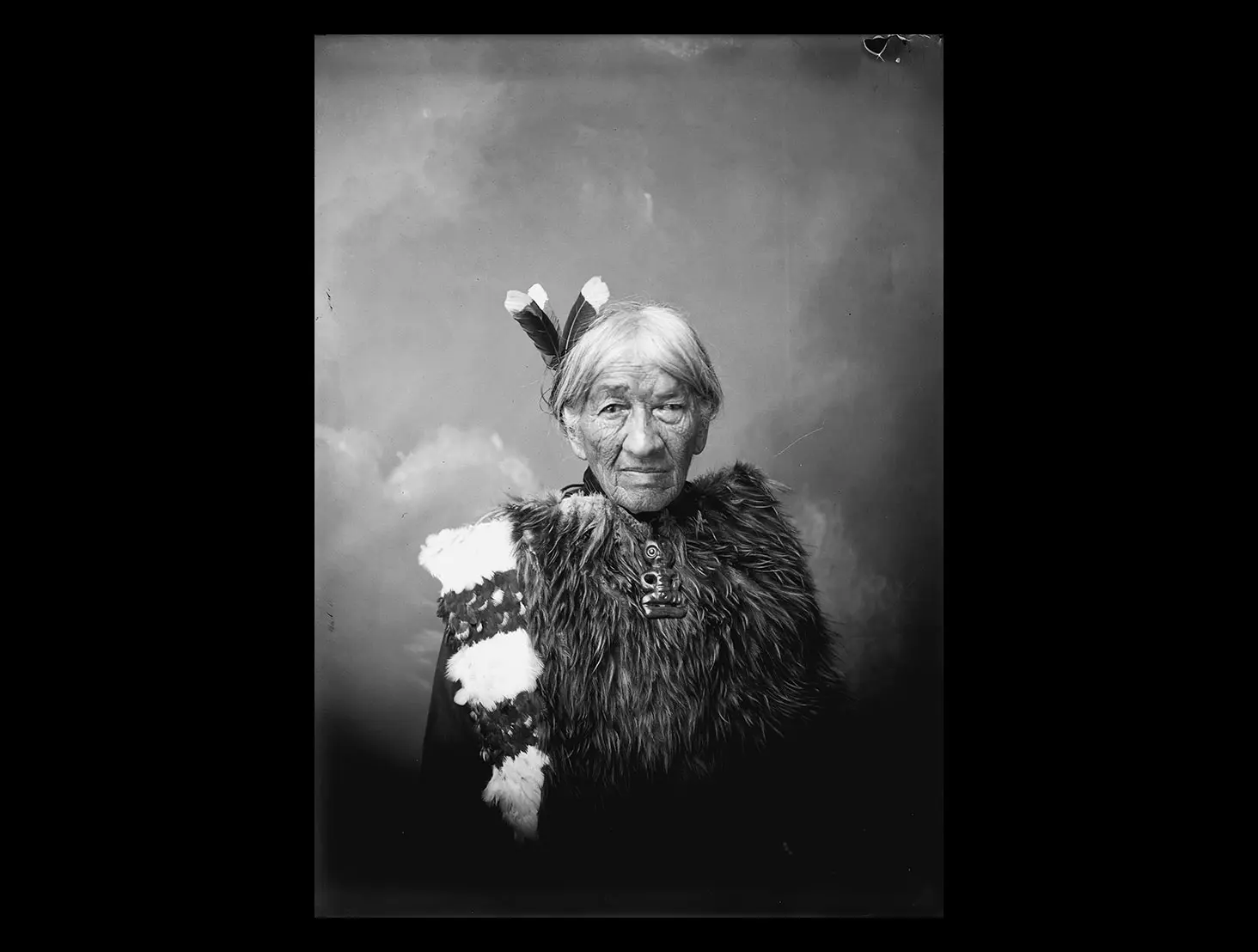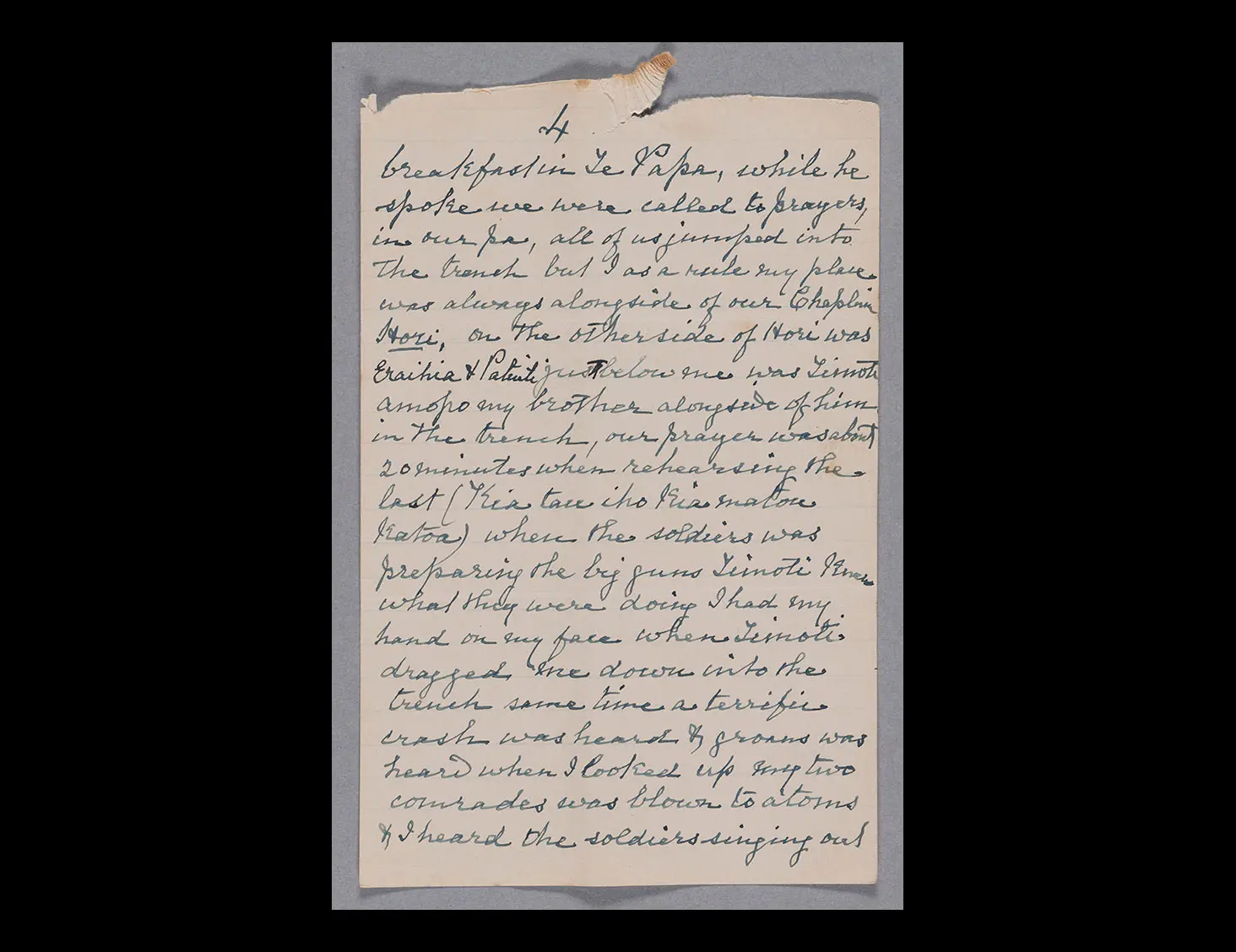Image credit: Portrait of Hēni Pore (also known as Hēni Te Kiri Karamū), 1920–1933. Photographer unknown. Ref: 1/2-041822-G Alexander Turnbull Library.

Image credit: Portrait of Hēni Pore (also known as Hēni Te Kiri Karamū), 1920–1933. Photographer unknown. Ref: 1/2-041822-G Alexander Turnbull Library.

Hēni Pore was a wahine toa who led a remarkable life and recorded it in a memoir. Read about her memories of being involved in a battle during Ngā Pakanga o Aotearoa | The New Zealand Wars. Find out more, and explore our collections and curated resources.
Tucked away among the papers of journalist and historian James Cowan (1870–1943) in the Turnbull Library is a 56-page memoir handwritten by Hēni Pore (Te Arawa; 1840–1933), a woman whose long and extraordinarily full life spanned almost a century of war and peace in Aotearoa New Zealand.
As a four-year-old, Pore witnessed the burning of Kororāreka at the beginning of the Northern War, and as a young mother in her twenties she fought for the Kīngitanga in Waikato and at Tauranga. Her memoir is an enthralling read, as this excerpt about the attack on Pukehinahina Gate Pā in April 1864 demonstrates:
as soon as the hangi was covered we were surprised to see the soldiers marching up towards us … as Rawiri Puhirake was on top of the parapet of his pa, I heard [him] refuse to give up the firearms, he said he intended to have breakfast in Te Papa … while he spoke we were called to prayers in our pa and all of us jumped into the trench … my place was alongside of our chaplain Hori; on the other side of Hori was Eraihia and Patutiti [and] just below me was Timoti Amopo, my brother alongside of him in the trench … I had my hands on my face when Timoti dragged me down into the trench [at the] same time as [a] terrific crash was heard and [then] groans … when I looked up my two comrades [were] blown to atoms … I heard the soldiers singing and laughing and I didn’t know what they laughed at, then I saw the whole potatoes of our hangi blown up, the shell which killed my two comrades went through the hangi bursting them.
At Pukehinahina this wahine toa also earned a reputation as a compassionate rival, crossing the lines to give wounded British troops water. Interestingly, the following year she joined her Te Arawa relatives supporting the colonial government against Pai Mārire forces at Matatā and Te Teko.
Although some of Pore’s life experiences were published in early twentieth-century newspapers, an inscription in her handwriting near the back of her account says, ‘more rubbish for you to burn’, suggesting that she thought few others would have an interest in her work or life. To the contrary, her writings and her life are now a taonga, and more special than ever. Ka nui te mihi ki a koe, e Hēni!
Story written by: Trish Beamsley
Copyright: Turnbull Endowment Trust
Image credit: Page 4 from ‘Handwritten account by Heni Pore about her involvement in the NZ Wars’. Ref: MS-Papers-11310-141 Alexander Turnbull Library.

Hēni Pore (aka Jane Foley, aka Hēni Te Kiri Karamū) was not only a wahine toa, but she also embroidered the red silk ‘Aotearoa’ flag for the Kīngitanga, a famous trophy from the wars that is now in the care of Auckland War Memorial Museum Tāmaki Paenga Hira.
Read a connected story from Te Kupenga: Wāhine Māori, whenua Māori.
Explore the Alexander Turnbull Library collections further:
Topic Explorer has:
Many Answers has:
Want to share, print or reuse one of our images? Read the guidelines for reusing Alexander Turnbull Library images.
Tikanga ā-iwi:
Te whakaritenga pāpori me te ahurea
Te ao hurihuri.
Te Takanga o Te Wā (ngā hītori o Aotearoa):
Whakapapa
Mana motuhake
Whanaungatanga.
Social sciences concepts:
Identity, culture, and organisation
Continuity and change.
Aotearoa New Zealand’s histories:
Māori history is continuous
Colonisation and its consequences
The exercise of power
Relationships and connections between people.